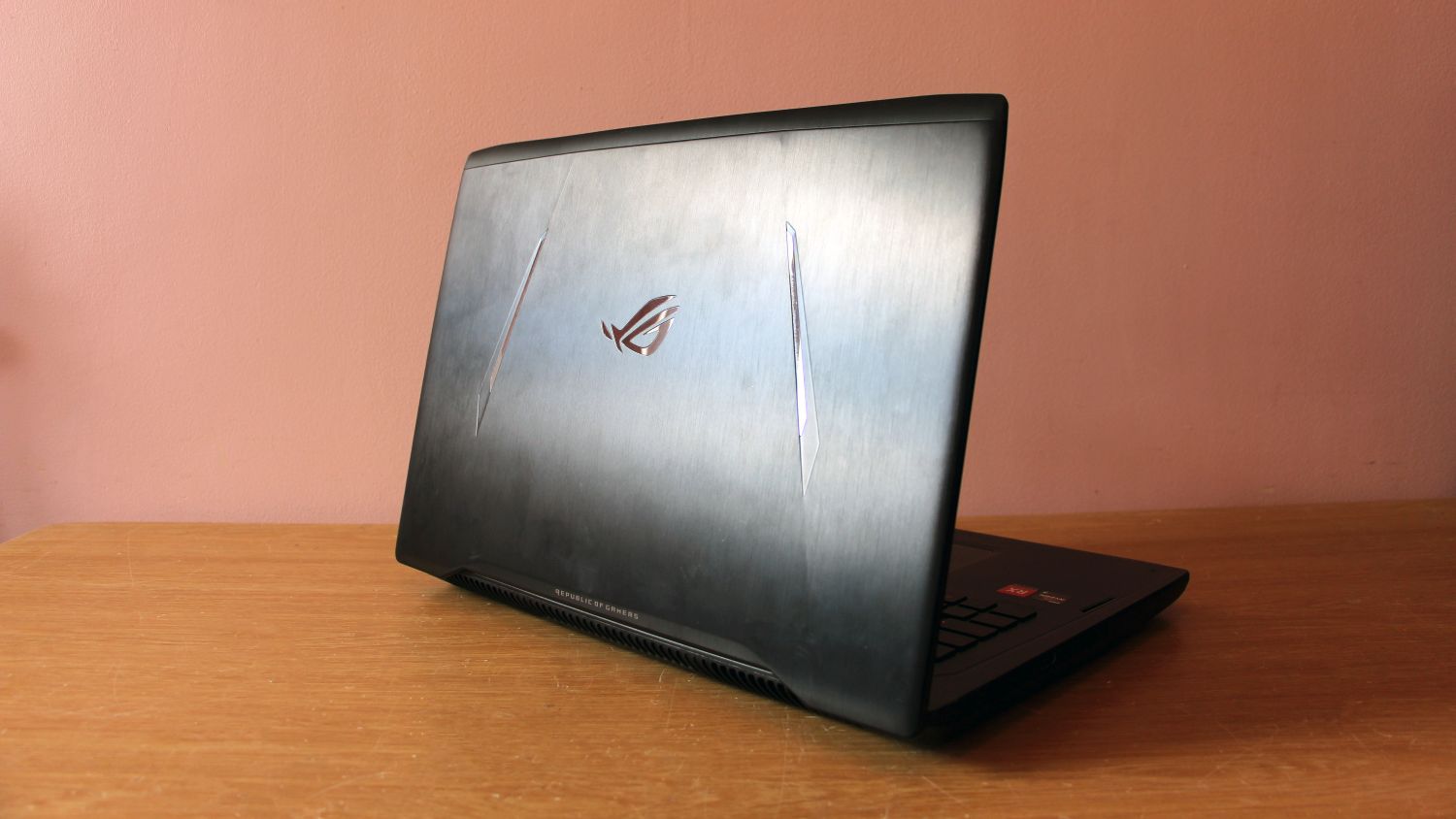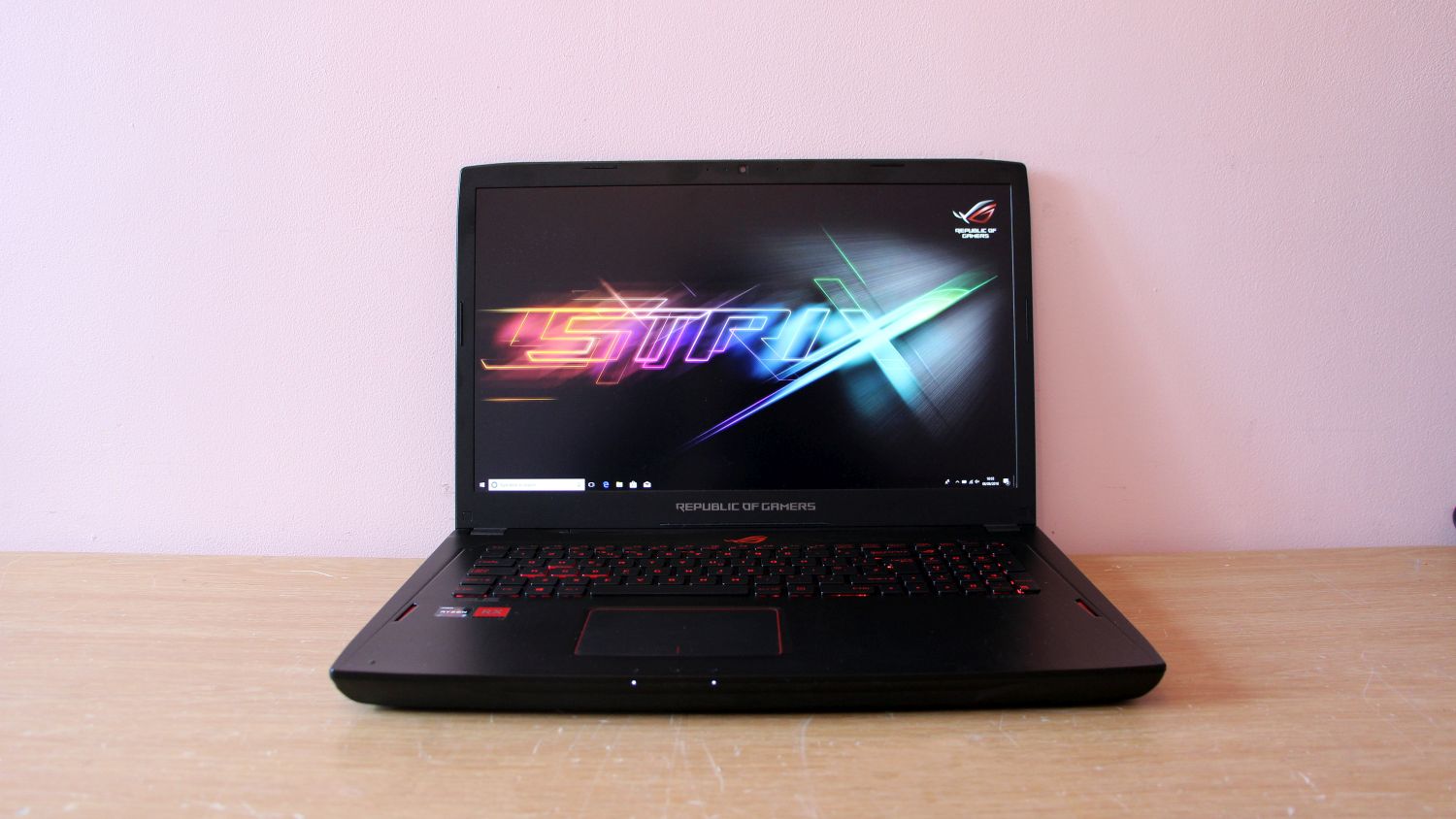TechRadar Verdict
The Asus ROG Strix GL702ZC is fast, especially in multi-tasking, but poor components and unbalanced design hinder it in other departments
Pros
- +
Impressive multi-threaded pace
- +
Solid speed in gaming
- +
Decent ergonomics
Cons
- -
Louder and hotter than rivals
- -
Other machines are better in games
- -
Heavy, thick and with no internal access
Why you can trust TechRadar
The Asus ROG Strix GL702ZC is an unusual gaming laptop. On the outside, it looks like so many other gaming portables: big, brash and heavy-duty.
Delve inside, though, and you’ll find a laptop powered by some of AMD’s finest desktop hardware – and a price that’s surprisingly low depending on where you look, as is typical with Asus laptops.
The gulf between desktop and laptop hardware has never been smaller, though, so should you opt for a portable with proper PC parts – or is it better to stick with mobile silicon?

Price and availability
Here is the Asus ROG Strix GL702ZC configuration sent to TechRadar for review:
CPU: 3GHz AMD Ryzen 7 1700 (8-core, 16MB cache)
Graphics: AMD Radeon RX 580 4GB
RAM: 16GB DDR4
Screen: 17.3-inches, 1,920 x 1,080 non-touch IPS
Storage: 256GB SanDisk SSD SSD, 1TB hard disk
Optical drive: No
Ports: 3 x USB 3.0, 1 x USB 3.1 Type-C, 1 x audio jack, HDMI, mini-DisplayPort, SD card reader
Connectivity: Dual-Band Wireless, Gigabit Ethernet, Bluetooth 4.1
Camera: 720p Webcam
Weight: 6.6 pounds (3kg)
Size: 1.33 x 16.3 x 11inches, 34 x 415 x 280mm (H x W x D)
The GL702ZC launched at nearer to $1,840 (£1,400, AU$2,482), but it can now be found for between £1,000 and £1,100 in the UK.
In the US, the GL702ZC costs around $1,499 – a straight conversion from the UK price. In Australia, though, you’ll have to pay around $2,399. That’s more akin to the original launch price.
The Asus squares up to tempting rivals. The HP Omen 17 is a large, stylish notebook that has a 4K display and GTX 1070 graphics – but an old Intel processor. It’ll set you back around $1,772 (£1,350, AU$2,390).
There’s home-grown competition, too. The $1,838 (£1,400, AU$2,479) Asus ROG Strix GL502 has a 15.6in 1080p screen – and it also uses a GTX 1070.
Sign up for breaking news, reviews, opinion, top tech deals, and more.
Design
The Asus ROG Strix GL702ZC is filled with desktop technology, but it looks like a conventional gaming laptop. It’s got a chrome-effect logo on the lid, and it’s made from smart, dark brushed aluminium, and the dark metal and plastic is accented throughout by red highlights.
The Asus ROG Strix GL702ZC looks good, but it’s not light or slim. It tips the scales at nearly seven pounds, and it’s 1.33 inches thick – so it’s a little thicker than the HP Omen 17.
For all of the good looks and size, though, build quality is inconsistent. The base panel is strong, but the metal around the trackpad and keyboard is a little flimsy. The screen is a bit wobbly, too. It’s certainly sturdier than the plasticky HP Omen, but you’ll still want to slip the Asus into a protective sleeve on the road.

Connectivity is fine, with three USB ports, a USB 3.1-Type-C port, and HDMI and DisplayPort outputs. On the inside you’ve got the usual Gigabit Ethernet and dual-band 802.11ac wireless. You don’t get internal access, though – which is disappointing, especially if you want to upgrade or change components.

Asus provides 1.6mm of travel on the GL702ZC’s chiclet keys, which is a tiny bit more than most gaming laptops. The buttons, unsurprisingly, are good: they’re firm and fast, with a consistent action and a solid feel beneath the finger.
That means they’re excellent for typing – which is handy, as Asus reckons that the GL702ZC is an ideal creative workhorse. However, the chiclet keys are still only mediocre for gaming, as they don’t have the travel or clinical feel of a proper gaming keyboard.
Meanwhile, the trackpad is good. It’s smooth and responsive, and its two built-in buttons are shallow and fast – so they do a decent job of mimicking a gaming mouse.
Mike has worked as a technology journalist for more than a decade and has written for most of the UK’s big technology titles alongside numerous global outlets. He loves PCs, laptops and any new hardware, and covers everything from the latest business trends to high-end gaming gear.
